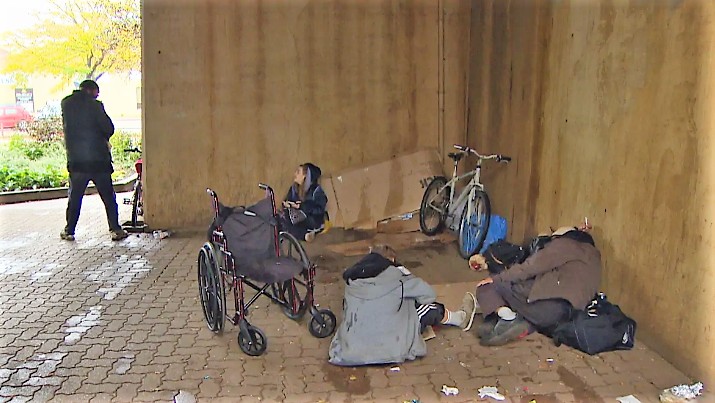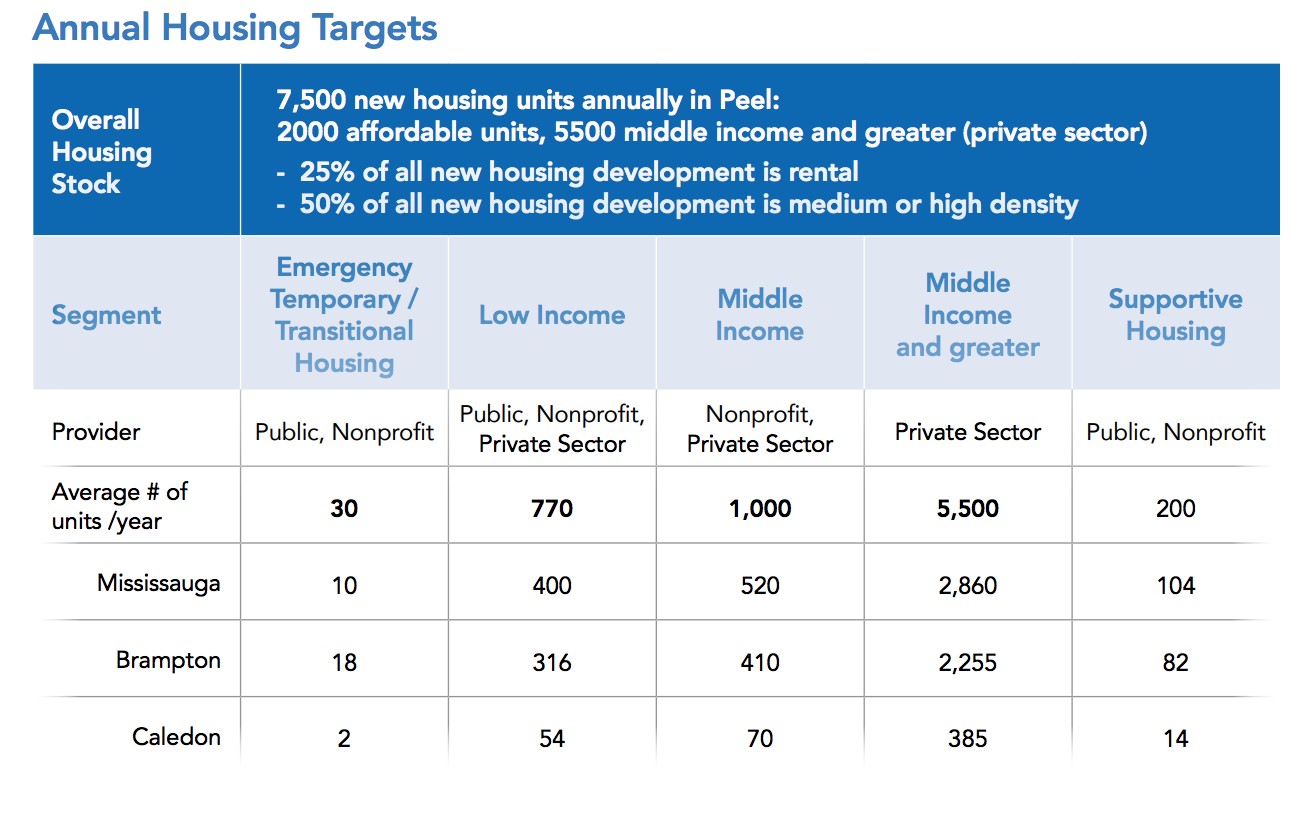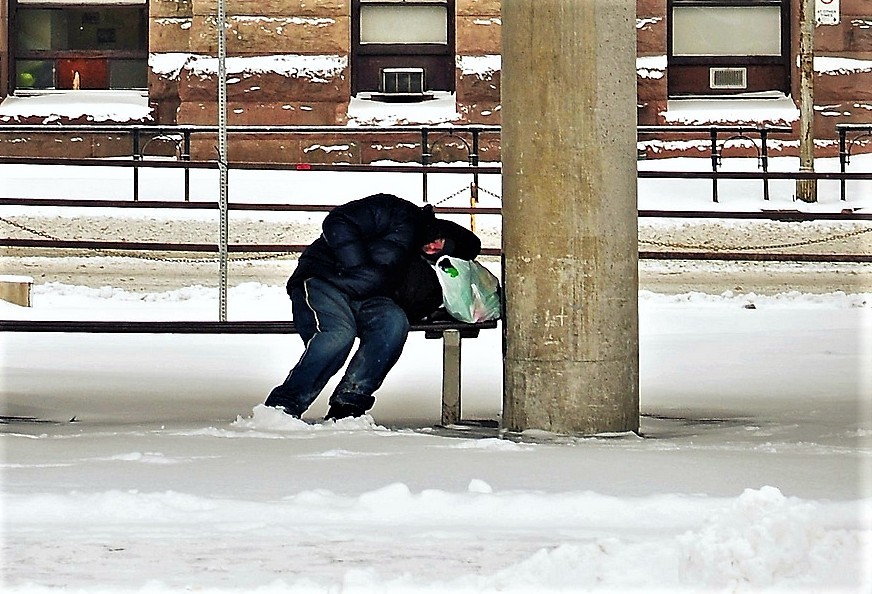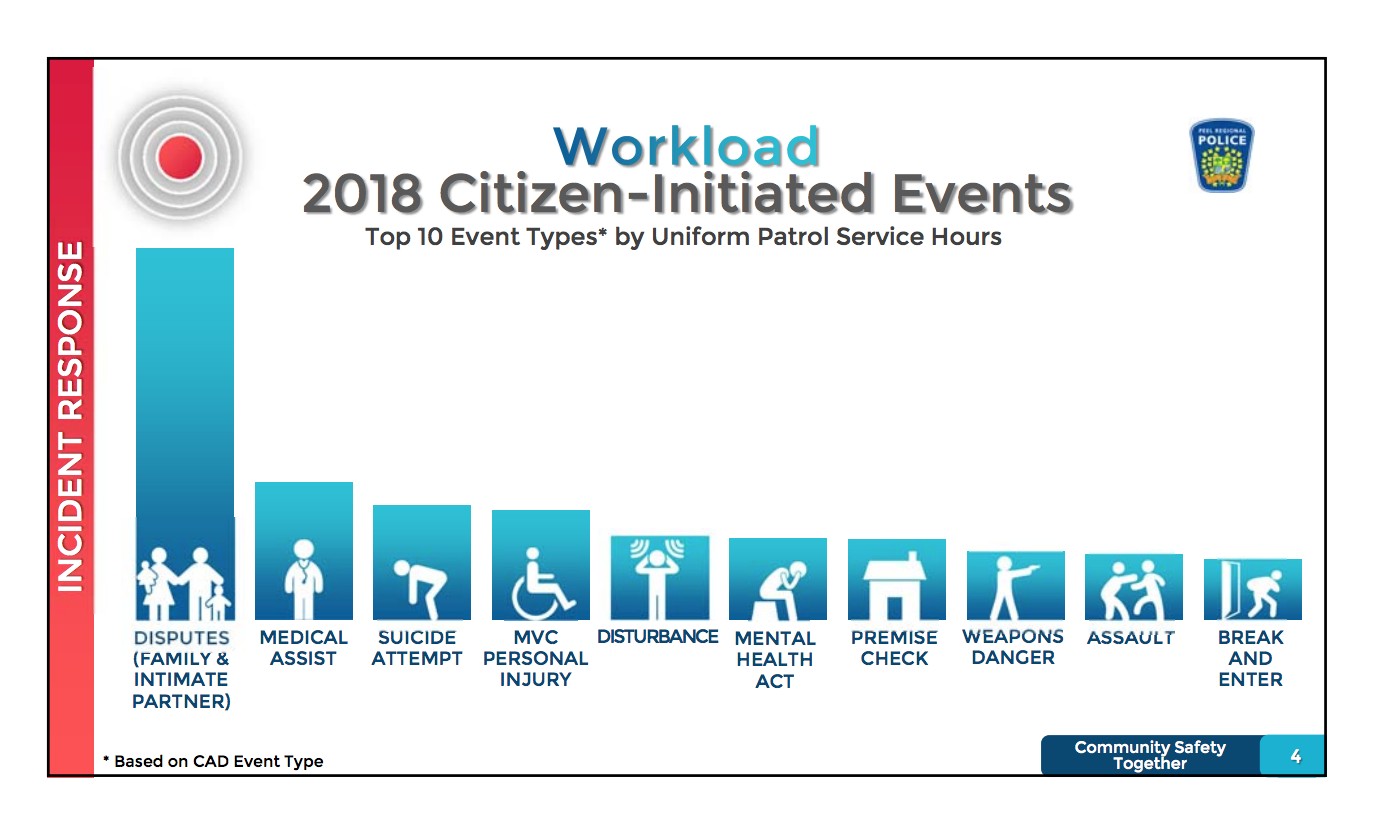
Homeless and those fleeing violence need ‘immediate’ shelter help as winter looms
People who flee countries are pushed to leave under all sorts of harrowing conditions. Janet Dankwa knew the road to a new life north of the American border would be uncertain. For women like her, trapped in an abusive relationship, the decision to escape is often made more difficult by the fear of life on the streets. The cruel lack of options can lead to more violence, even death.
“Anybody can become homeless,” said Dankwa, now a housing advocate and member of the Peel Poverty Reduction roundtable, rhyming off the things she was forced to leave behind in the U.S. – her house, job and family. “I would rather go through the things I experienced knowing that I’m in a safe place, knowing that I’m getting support that I needed.”
Her journey to stable housing – an apartment she rents by herself – was made possible by Peel Region support workers who helped her access mental health and other services to get back into the workforce. That was before COVID-19 hit and introduced new uncertainties.
As the province imposes further restrictions to contain a second wave of COVID-19 cases, the economic stresses – from business closures to declining municipal revenues – loom over the upcoming budget season. And what winter brings this year could make navigating homeless services during COVID-19 that much more of a challenge for the region’s most vulnerable.
In Peel, staff are racing to identify “immediate solutions” to address homelessness in downtown Brampton and parts of Mississauga, regional council heard on Oct. 15. The combined effects of colder temperatures, flu season and the pandemic, could devastate vulnerable street populations.

Areas like downtown Brampton are already seeing an increasing need for supports for those experiencing homelessness, a need that will almost certainly increase as the colder weather approaches.
While Peel’s ambitious $1-billion Housing Master Plan is expected to create over 5,300 affordable housing units, and another 280 emergency and supportive shelter beds by 2034, it does not address the immediate crisis staring down the region’s homeless population with winter’s arrival.
Even the long-term strategy still lacks about one-third of the required funding.
The housing master plan represents a significant reduction from the affordable housing capacity approved by council in 2017 under the Region’s prior Home For All strategy, which called for 7,500 affordable housing units annually between 2018 and 2028, in partnership with the private sector. The plan has effectively been abandoned.

The much more ambitious targets of Peel's previous Home for All plan which has been effectively abandoned by the Region.
The Region is spending $335.3 million on the latest iteration of the affordable housing plan, with another $276.4 million committed by the federal government. A staff report to the Strategic Housing and Homelessness Committee criticizes the “significantly and disproportionately high” contribution coming from the Region, compared to other levels of government.
Updates on affordable housing developments
360 City Centre Drive
Capacity: 174 new affordable rental units for seniors and market rent, and clients on Region’s Centralized Waiting List
ETA: First quarter of 2021 (delayed completion from October 2020)
Port Credit West Village (Brightwater)
Capacity: 150 new affordable housing units (out of total 2,970 new residential units)
ETA: 2023
East Avenue Site redevelopment
Capacity: 156 affordable housing units (includes 30 replaced units)
ETA: 2023
Peel Family Shelter relocation
Capacity: 120 beds (includes 60 replaced beds)
ETA: TBD
Brampton Youth Shelter
Capacity: 40 beds
ETA: TBD
“We've never had our fair share of funding from the province. Yes, they give us money, but...they're asking us to take a lot of people,” said Caledon and Regional councillor Annette Groves, the committee chair. She’s grateful for the money but says it’s not enough.
The last two regional budgets, the document that reveals the funding priorities of elected officials, offered next to no investment in new affordable housing units or permanent shelter spaces.
None of the long-range planning will help those facing the perfect storm now threatening vulnerable individuals.
No one wants a repeat of the winter of 2018-19, when a polar vortex brought crippling temperatures across the northern hemisphere. The City of Toronto reported 222 deaths among the homeless in 2018 and 2019.

With few places to turn in Peel, those experiencing homelessness are, in many cases, forced to try and survive outdoors during frigid winter temperatures.
The isolating effect of the pandemic, coupled with a lack of shelter spaces for women in Peel trapped in abusive relationships, could leave even more people searching for options.
The Region is offering outreach and health services through two mobile vans, and launched a new 24/7 support line on Oct. 19 for residents seeking a place in a Peel shelter. The service has a no-turn-away policy. This “compassionate approach”, as previously described by the region’s commissioner of human services Janice Sheehy, keeps people out of the cold, but also exacerbates problems in the region’s already clogged system.
The Centralized Wait List for affordable housing in Peel, among the longest in Ontario, has been growing for more than a decade. Last year it jumped to 14,997 residents in June from 13,597 at the same time the year before.
A Point in Time Count completed across Peel Region in 2018 found nearly 1,000 people without a home in a single night. A quarter of them pointed to the lack of affordable housing options in the region as one of the factors preventing them from finding housing.
The pandemic has been a wakeup call in exposing social inequities connected to housing, Daphna Nussbaum said in an email. She is a program coordinator and analyst at the Peel Alliance to End Homelessness.
“The pandemic saw a need to increase support for women experiencing domestic violence, who had to isolate themselves with partners.”
Peel Regional Police responded to an increased number of family disputes at the beginning of the pandemic, Const. Bancroft Wright said in an email, with data showing an 11 percent increase in calls compared to 2020. From January to May 2020, officers responded to 3,384 family dispute incidents. In the same period in 2019, they responded to 3,034 and 2,824 in 2018.

Family and intimate partner disputes are, by far, the most common citizen-initiated call to Peel Regional Police. A crisis that could be worsened as people are isolated and forced to stay indoors during the winter months.
Intimate partner occurrences tracked with trends seen in the two previous years, but the average number of calls in that period for the last three years – 4,160 – remains high. It’s a trend that has the potential to worsen with the arrival of colder temperatures keeping people indoors and isolated, dynamics compounded by the pandemic.
Restricted access to community resources was made more challenging by private business closures.
“When businesses were shut down during the onset of COVID-19, people experiencing homelessness became more visible, primarily because they couldn't access coffee shops, the library and other indoor spaces,” Nussbaum said.
Dankwa, who now works as a housing advocate, relied on these places for a Wifi connection in the past. When it comes to shelters, she understands why people may prefer to find their own spaces to sleep outdoors.
“I have been in a shelter before. Would I go back? No. Even if that’s the last choice I have,” she said, adding she witnessed “horrible things” in her time using shelter services in Halton Region.
From the beginning of the pandemic until June, Peel staff were able to house about 300 people through 70 units the Region identified via two landlords. To this date, staff have moved 600 homeless people into long-term, stable housing during the pandemic, said Peel spokesperson Lesley Hudson, in an email.
Staff reduced shelter capacity to facilitate physical distancing by using hotels, with only 18 people testing positive for COVID-19 so far, according to a regional housing report.
There are currently 519 people using the shelter system and hotel rooms provided by the Region.
“I think Peel is a really great example of what happens when you have a housing focused approach and use COVID-19…as an opportunity to fast-track people” out of shelters, said Stefania Seccia, a spokesperson at the Canadian Alliance to End Homelessness.
The challenges of extreme weather may be felt at an uncertain time in the pandemic, especially if physical distancing protocols continue to be mandated. Among the unintended consequences of social isolation at the start of the pandemic was a rise in harmful drug use and toxic drug supply, Seccia said, and feelings of burnout among support staff.
“We've officially hit the second wave, particularly in Ontario, and we're starting to see communities preparing for winter,” she said.
In Peel, staff are expected to return to council before the end of the year with proposed reallocated funding for “immediate measures,” as requested by Brampton Councillor Paul Vicente.
Homeowners can also expect assistance from the Region in the form of an incentive program that will subsidize renovations designed to create affordable rental housing through the second unit renovation program, which launched on Oct. 19.
To find a shelter spot in Peel Region, contact 905-450-1996.
To connect with the outreach services Street Helpline, contact 1-877-848-8481.
Email: [email protected]
Twitter: LaVjosa
COVID-19 is impacting all Canadians. At a time when vital public information is needed by everyone, The Pointer has taken down our paywall on all stories relating to the pandemic and those of public interest to ensure every resident of Brampton and Mississauga has access to the facts. For those who are able, we encourage you to consider a subscription. This will help us report on important public interest issues the community needs to know about now more than ever. You can register for a 30-day free trial HERE. Thereafter, The Pointer will charge $10 a month and you can cancel any time right on the website. Thank you.
Submit a correction about this story


